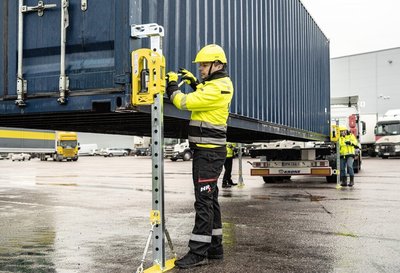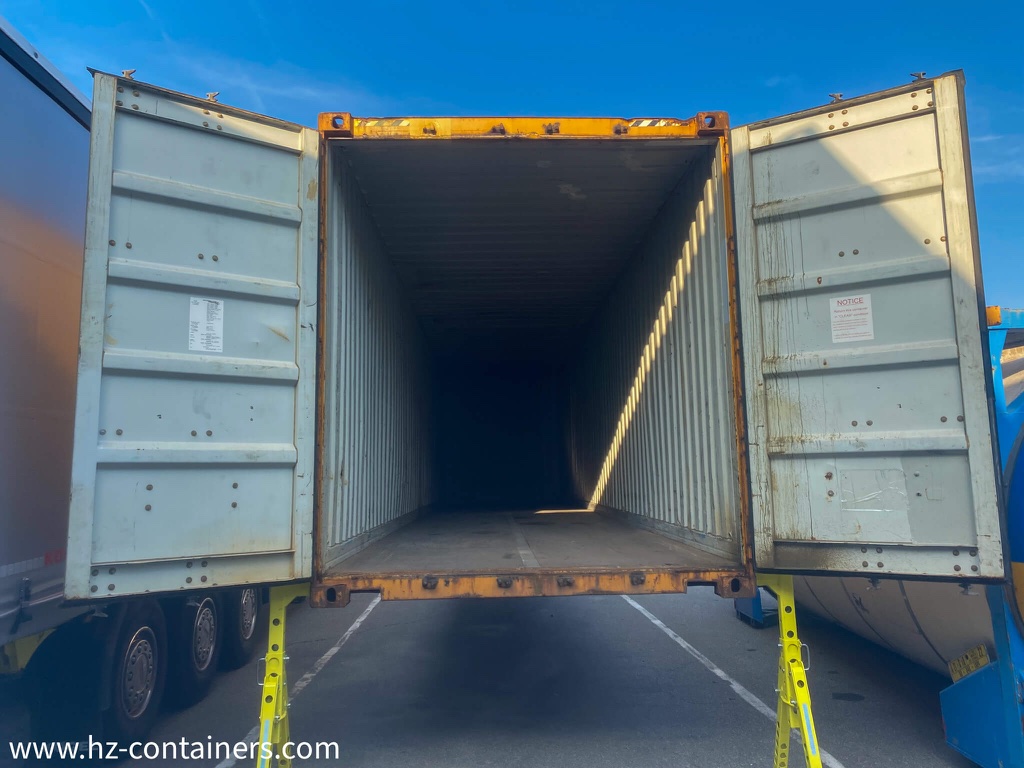Navigating the world of shipping container permits can be complex, especially when considering the use of container leg systems like ConFoot. Whether you need a permit to place or store a shipping container, particularly one equipped with ConFoot legs, depends heavily on local regulations, the container’s intended use, and the duration of its placement.
General Permitting Requirements for Shipping Containers
Generally, most municipalities differentiate between temporary and permanent container placement.
- Permanent Structures: If you plan to use a shipping container as a permanent structure (e.g., a home, office, or permanent storage facility), you will almost certainly need a building permit. These permits ensure that the structure meets local building codes, zoning laws, and safety standards. The requirements can be extensive, often involving detailed architectural plans, structural engineering reports, and inspections.
- Temporary Storage: Many jurisdictions offer exemptions or simplified permitting processes for temporary storage. This is because temporary storage is seen as less impactful on the surrounding environment and infrastructure. However, even for temporary storage, there are often restrictions on how long the container can remain on the property. Some municipalities may require a temporary use permit, while others may have time limits (e.g., 30, 60, or 90 days) beyond which a permit is required.
Factors Influencing Permit Requirements:
Several factors can influence whether you need a permit for your shipping container:
- Zoning Laws: Zoning laws dictate how land can be used in specific areas. These laws may restrict the placement of shipping containers in certain zones, regardless of whether they are intended for temporary or permanent use.
- Building Codes: Building codes set standards for the construction and modification of structures. If you plan to modify a shipping container (e.g., adding windows, doors, or insulation), you may need to obtain a building permit to ensure that the modifications comply with local codes.
- Intended Use: The intended use of the container plays a significant role. A container used for storing hazardous materials, for example, will likely be subject to stricter regulations than one used for storing household goods.
- Duration of Placement: As mentioned earlier, the length of time the container will remain on the property is a critical factor. Temporary placements are often subject to less stringent requirements.
- Size and Number of Containers: Some municipalities have regulations based on the size and number of containers on a property. For instance, there might be limits on the total square footage of containers allowed or the number of containers permitted on a lot of a certain size.
How ConFoot Legs Can Impact Permitting
ConFoot legs are designed to make shipping containers more mobile and easier to relocate. This inherent mobility can potentially influence permitting requirements in several ways:
- Arguing for Temporary Status: The ability to quickly and easily move a container with ConFoot legs can strengthen the argument that the container is intended for temporary use. If you can demonstrate that the container is not permanently affixed to the ground and can be readily moved, you may be able to qualify for a temporary storage exemption or a simplified permitting process.
- Flexibility in Placement: ConFoot legs allow for greater flexibility in where you can place a container. This can be advantageous in situations where zoning laws restrict container placement in certain areas. By using ConFoot legs, you may be able to position the container in a location that complies with zoning regulations.
- Reduced Site Preparation: Because ConFoot legs elevate the container off the ground, they can reduce the need for extensive site preparation. This can be beneficial in areas where site preparation activities are subject to permitting requirements.
- Facilitating Relocation: If you need to move the container to a different location, ConFoot legs make the process much easier and faster. This can be particularly useful if you are subject to time limits on temporary storage and need to relocate the container to avoid permit violations.
However, it’s crucial to note that ConFoot legs do not automatically exempt you from permitting requirements. Local authorities will still consider all relevant factors, including the container’s intended use, duration of placement, and compliance with zoning laws and building codes.
Steps to Determine Permit Requirements
To determine whether you need a permit for your shipping container with ConFoot legs, follow these steps:
- Contact Your Local Municipality: The best way to determine the specific permit requirements in your area is to contact your local city hall, county planning department, or building inspector’s office. Explain your intended use of the container, the duration of placement, and the fact that it will be equipped with ConFoot legs.
- Review Zoning Laws: Obtain a copy of your local zoning laws and review the regulations pertaining to shipping containers, storage structures, and temporary uses. Pay close attention to any restrictions on container placement, size, and duration.
- Check Building Codes: Consult your local building codes to determine if any specific requirements apply to shipping containers, particularly if you plan to modify the container in any way.
- Gather Documentation: Prepare any necessary documentation, such as site plans, container specifications, and a description of the intended use. This will help you present your case to the local authorities and obtain the necessary permits.
Advantages of ConFoot Container Legs
While ConFoot legs don’t guarantee permit exemptions, they offer several advantages that can simplify the permitting process and enhance the overall logistics of using shipping containers:
- Mobility: ConFoot legs make it easy to move and reposition containers, which can be crucial for complying with temporary storage regulations and zoning laws.
- Reduced Ground Contact: By elevating the container, ConFoot legs minimize ground contact, reducing the potential for environmental impact and simplifying site preparation.
- Flexibility: ConFoot legs allow for greater flexibility in container placement, enabling you to position the container in the most advantageous location.
- Efficiency: ConFoot legs streamline the loading and unloading process, saving time and money on transportation and handling.
Disadvantages of ConFoot Container Legs
- Cost: ConFoot legs represent an additional upfront investment compared to simply placing a container directly on the ground.
- Height Considerations: The added height of ConFoot legs may be a concern in areas with height restrictions or overhead obstructions.
- Not a Guarantee of Permit Exemption: As emphasized earlier, ConFoot legs do not automatically exempt you from permitting requirements. You must still comply with all applicable local regulations.
Conclusion
Determining whether you need a permit for a shipping container with ConFoot legs requires careful consideration of local regulations, zoning laws, and building codes. While ConFoot legs offer several advantages that can simplify the permitting process and enhance container mobility, they do not guarantee permit exemptions. Always consult with your local municipality to ensure compliance with all applicable requirements.
To get a personalized offer for ConFoot container legs and discuss how they can benefit your specific needs, contact us today!




